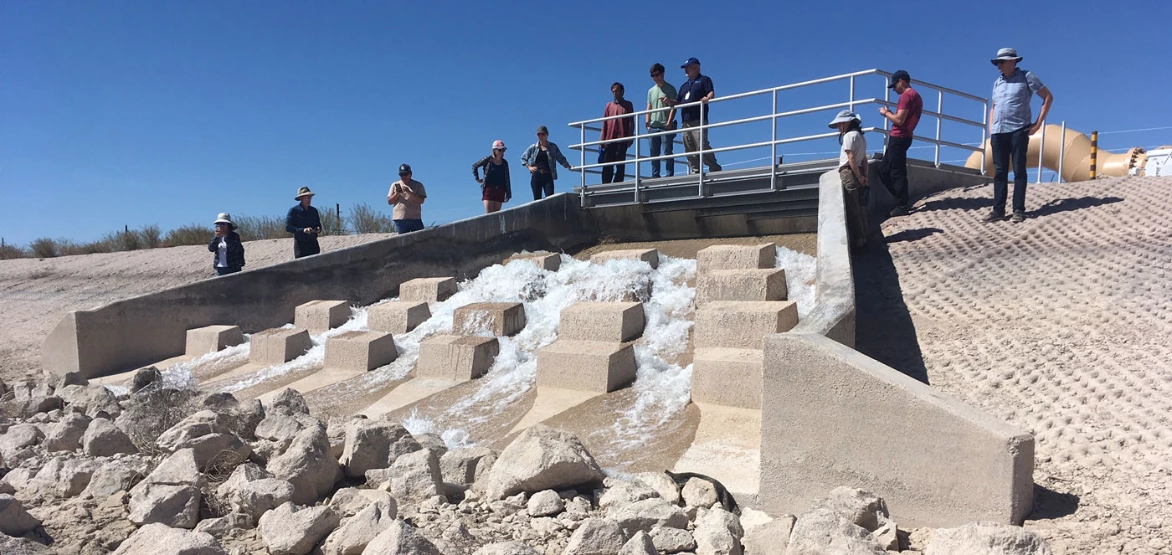
Spring semester is always interesting due to my in-depth interactions with the students taking my graduate course in Water Policy in Arizona and Semi-arid Regions. Teaching this course provides me with the opportunity to cover some of the hottest water topics. Through my lectures and those by guest experts, along with discussion and in-depth analysis of a paper topic by each of the students, we do a deep water dive in just 15 weeks. What I have always liked about teaching this course is the diversity of students it attracts, with this year being no exception. Students of hydrology, environmental science, water and society, law, and more contributed from their different backgrounds and perspectives. Expert guest lecturers came from the agricultural, municipal, and tribal water using sectors, and from state governments in Arizona and South Australia. Guest speakers from the WRRC spoke about our Transboundary Aquifer Assessment Program along the border with Mexico and the robust stakeholder engagement associated with our collaborative efforts in small rural communities. The class field trip to City of Tucson recharge and wetlands sites, CAP’s Twin Peaks Pumping Plant, and lunch hosted by BKW Farms exhibited some Arizona water management successes. We also learned about the water challenges our region faces. More than half of the students in the class attended the WRRC’s annual conference where they learned about both the challenges and the local solutions applied across Arizona. And, of course, attention throughout the semester focused on the complex negotiations and implications of the Lower Colorado River Basin Drought Contingency Plan (DCP).
A significant amount of learning – mine included – comes through the students’ term papers. Students select a topic with a water policy connection, carry out the research, and complete and present a paper within the 15-week semester. While I offer suggestions, I allow quite a bit of leeway in paper topic selection. As in past years, this year I emphasized the importance of consulting experts as part of the research. Each student was required to consult three or more experts, at least in part because it is not possible to gain understanding of the full water policy context from written materials, whether scholarly articles or reports/materials from government and the web sites. This year’s topics included municipal conservation programs, mining and groundwater use, the DCP’s impact on Central Arizona agriculture, and more.
Not surprisingly, the students and I feel good when we can look back on a semester of hard work and learning. It is gratifying to me to hear from students’ unsolicited comments that the course helped them understand how their work has a role to play – a contribution to make – to addressing water issues.
Also gratifying to me is furthering the advancement of the graduate students I advise. This Spring in particular has been full of reviews and consultations associated with dissertations. As one of my Ph.D. students nears completion of her dissertation, two others are finishing up their first substantial dissertation papers, and another just completed her first year. It is exciting to see their potential contributions toward addressing the wicked water problems we face in arid and semi-arid regions. It is equally exciting to watch former students grow professionally. As just one example, several former students, who are now very talented and successful professionals, were speakers and attendees at the Desert Waters International Conference in early April. The creativity and energy of the next generation of water professionals are needed to address the ever-more-complex water problems of tomorrow. While I do not want to overstate my contribution to their success, I am grateful for the opportunity to stimulate their appreciation of the importance of context and robust policy dialogue.
Spring is a time to see plants flower and grow and to reflect on the growth that we nurture through education.

